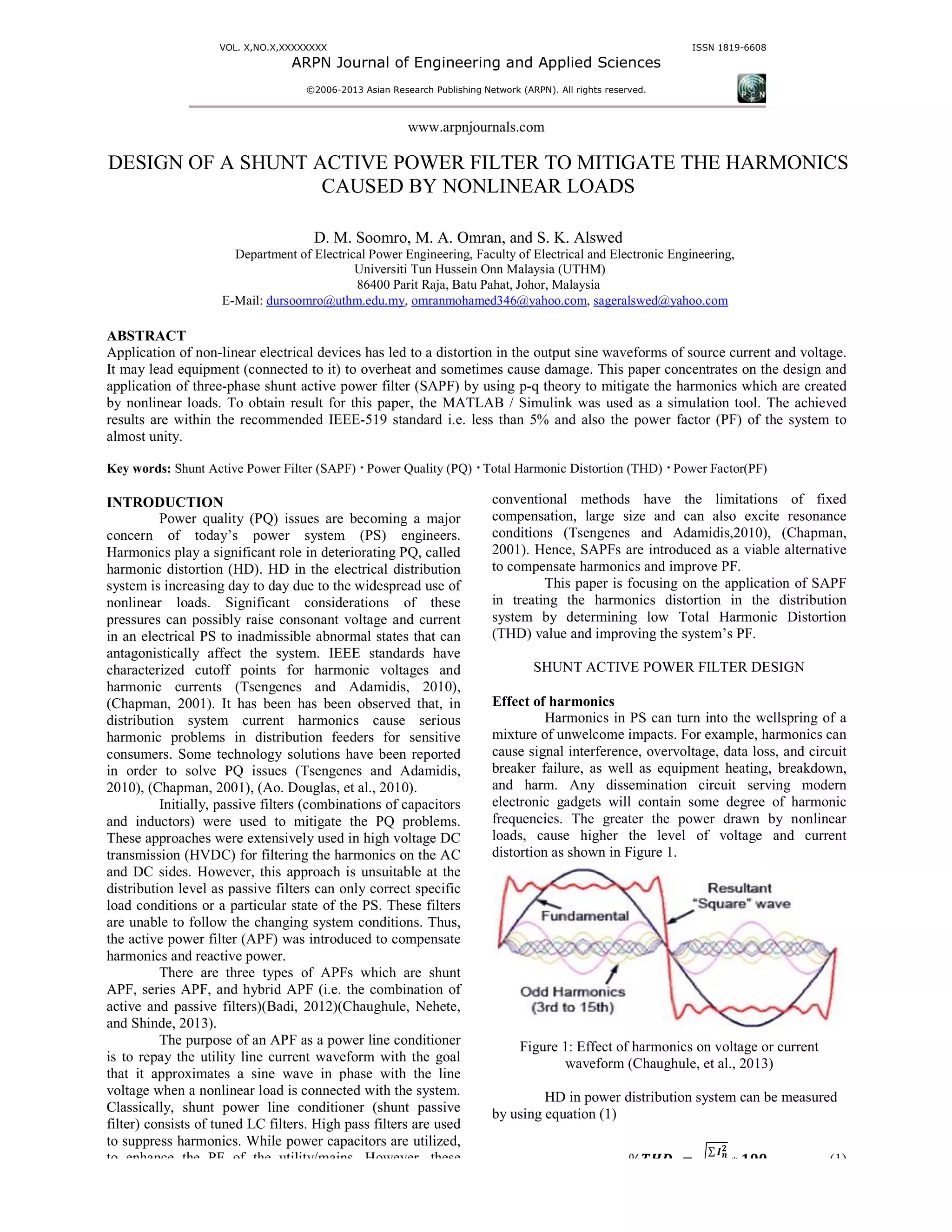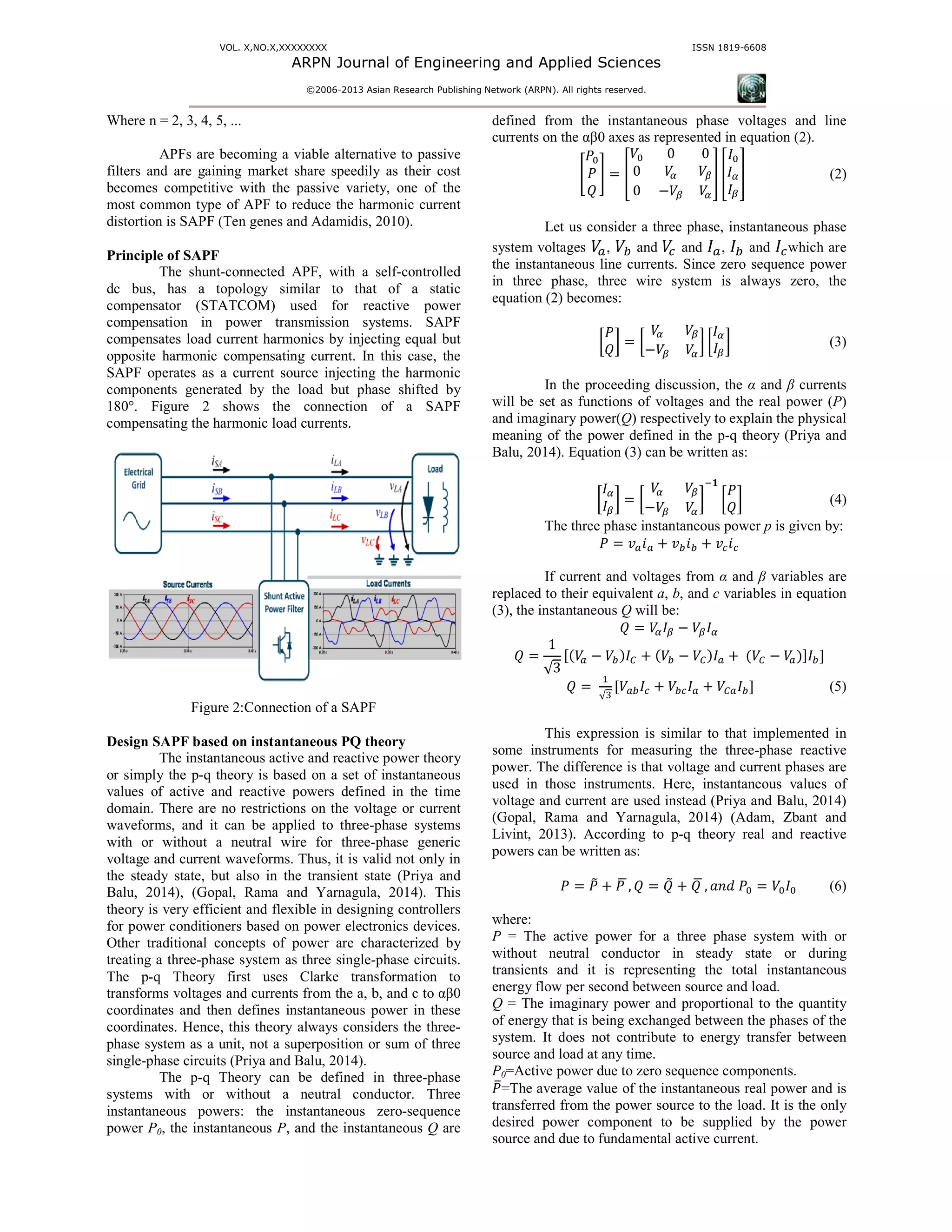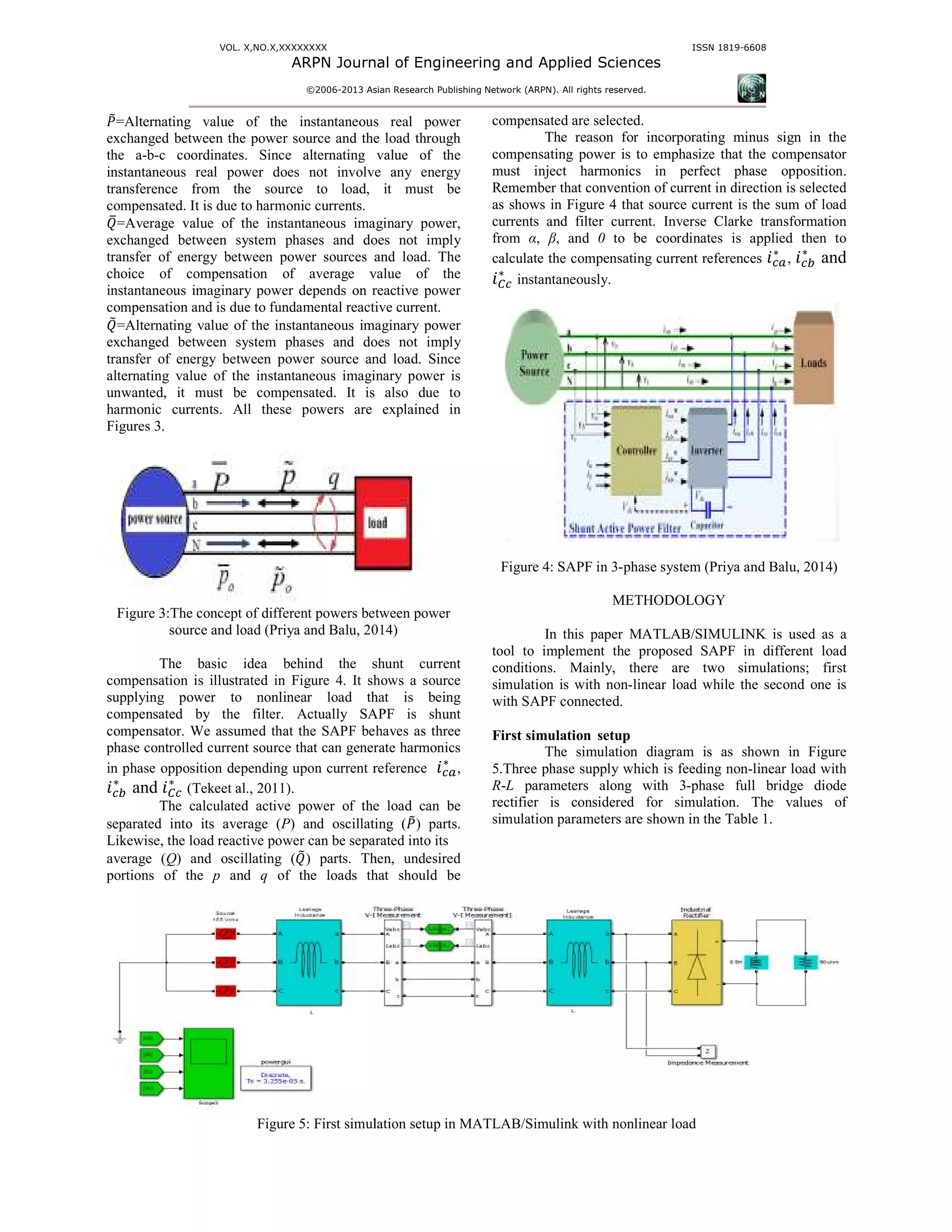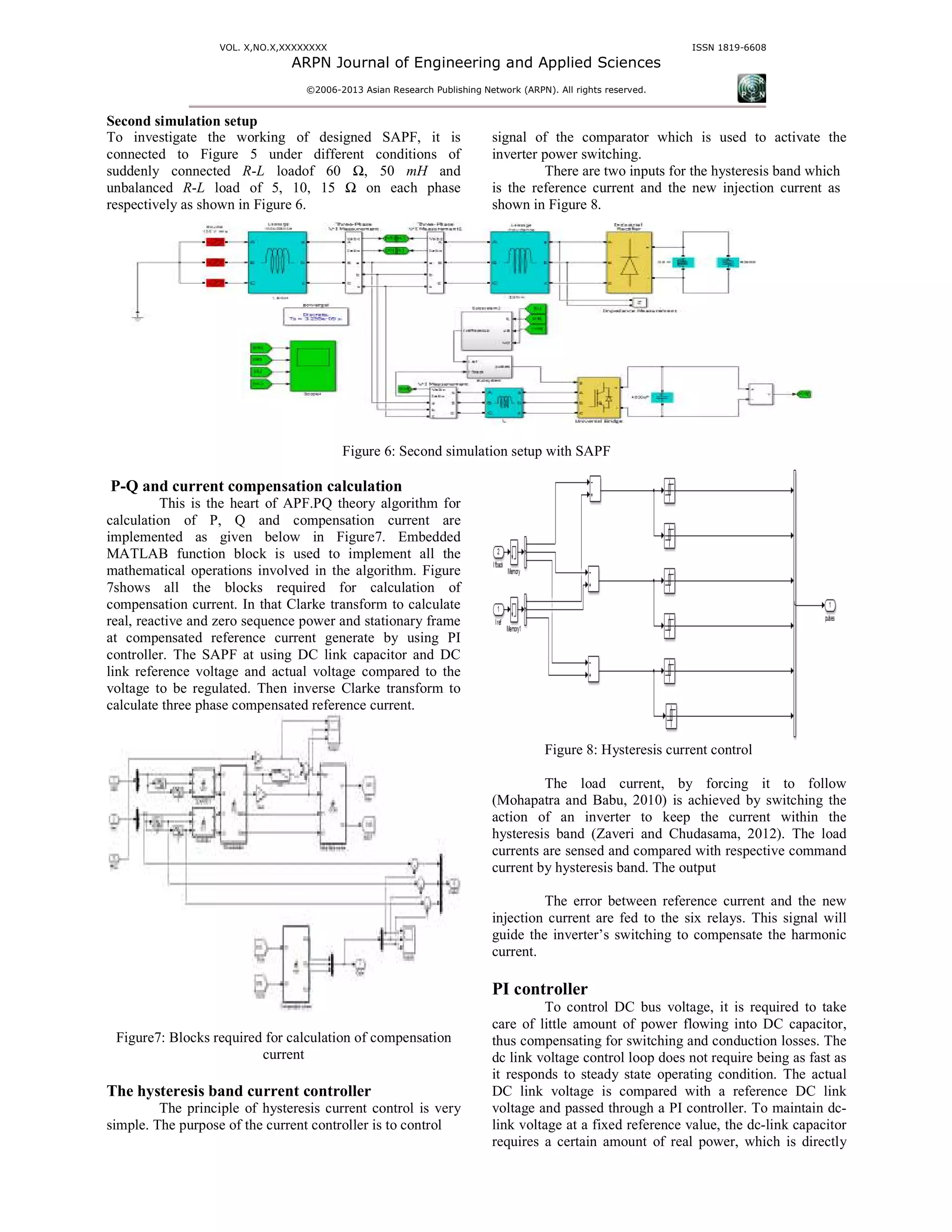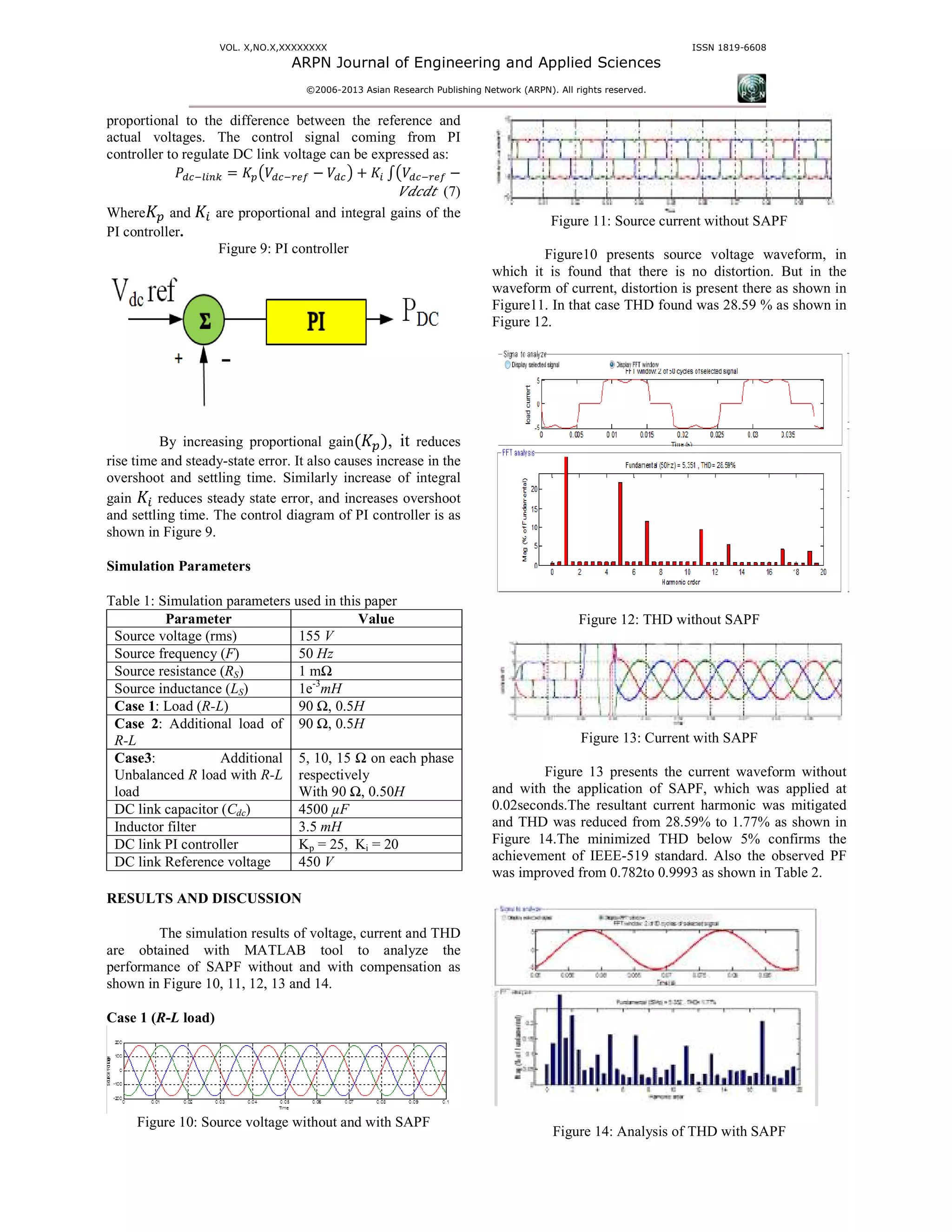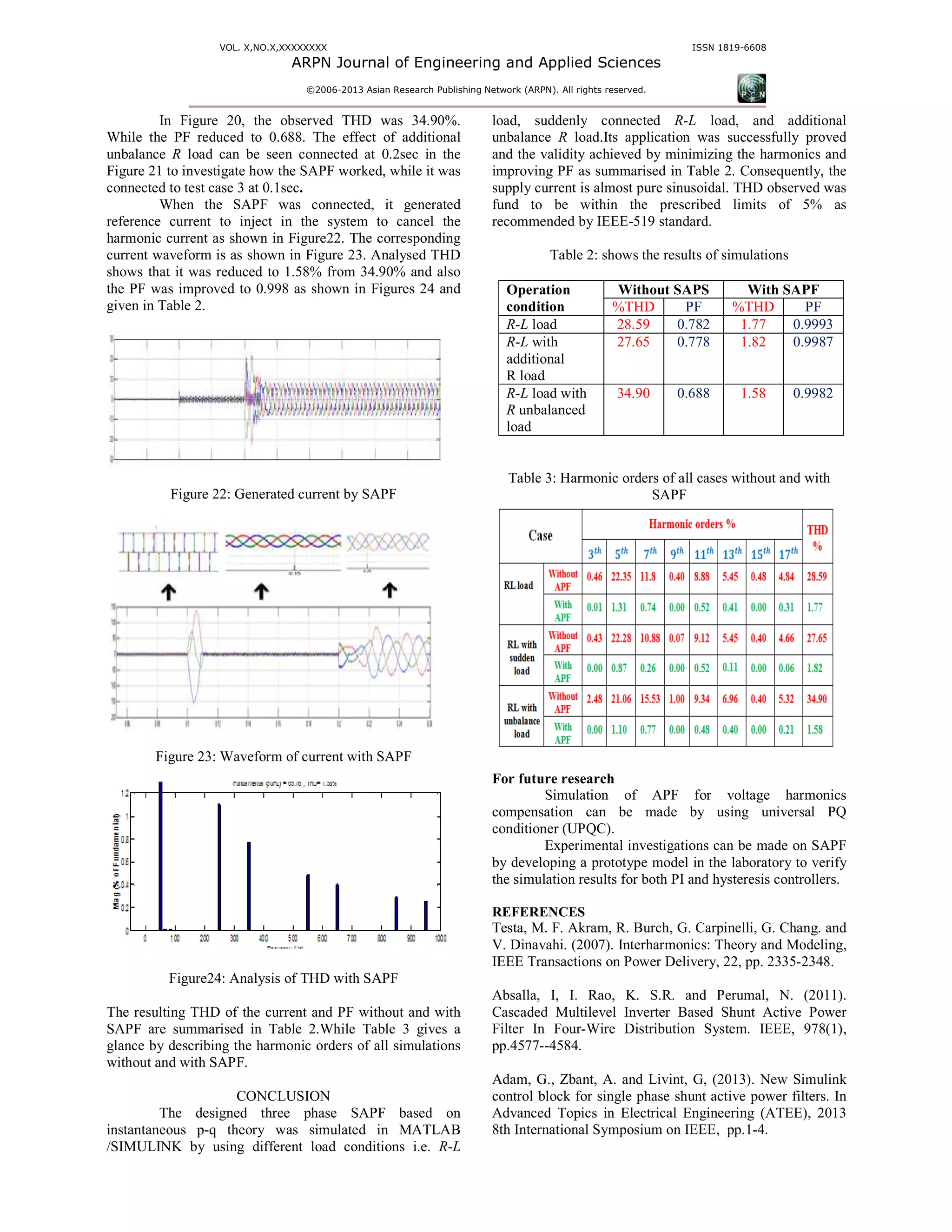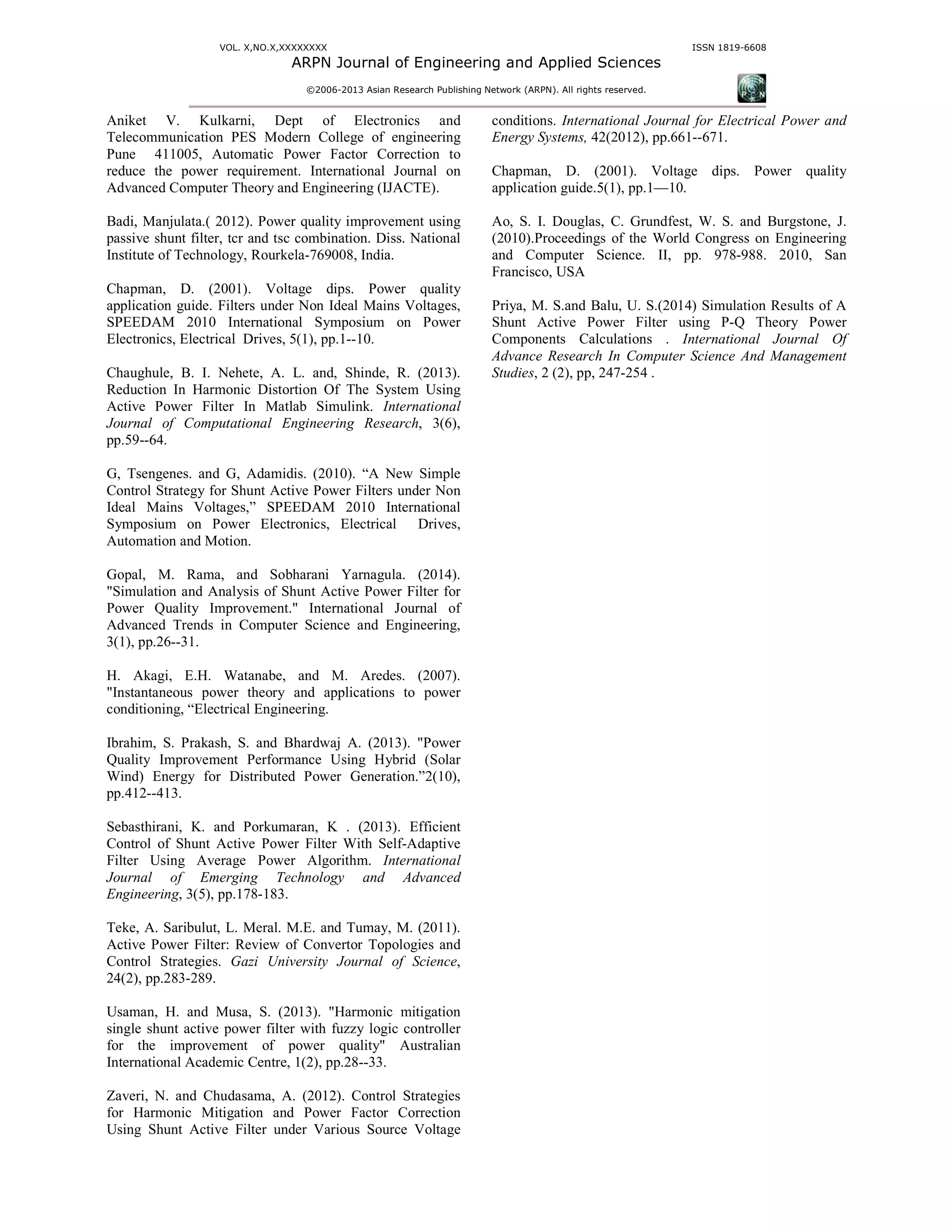The document discusses the design and implementation of a three-phase shunt active power filter (SAPF) to mitigate harmonics caused by nonlinear loads in electrical power systems. Using MATLAB/Simulink for simulation, the study emphasizes the advantages of SAPF over passive filters in improving power quality and reducing total harmonic distortion (THD). It also highlights the application of instantaneous active and reactive power theory (p-q theory) for effective control of power conditioners.
